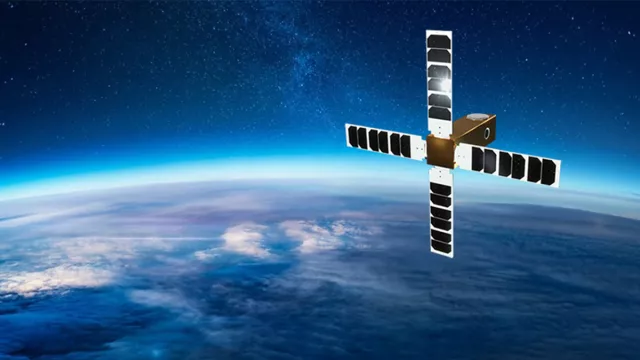NƐSS is a 3U nanosatellite tipping the scales at 4.9 kilograms, operating in low Earth orbit (LEO) at an altitude of 564 kilometres. This tiny demonstrator is designed to validate in orbit miniaturized technologies capable of detecting and locating interfering emissions on Earth. It is also carrying a magnetometer to measure Earth’s magnetic field. It will notably validate a project concept for which CNES is calling on local, agile and innovative start-ups.
Key information
| Mission | Demonstrator to evaluate technologies in orbit capable of detecting and locating emitters in L and S bands |
|---|---|
| Domain | Telecoms/navigation, defence |
| Launch date | 9 October 2023 |
| Partners | U-Space (bus), Syrlinks (payload) |
| Where | Initially in Sun-synchronous orbit at 564 km |
| Lifetime | 1 year with option for extension |
Key figures
- 4.9 kg: satellite mass
- 10 x 10 x 30 cm: satellite dimensions
- 1 instrument
- 1 to 4 GHz: frequency range of collected signals
Key milestones
- 9 October 2023: Launch of NƐSS by Vega flight VV23
- December 2019: U-Space formed
- November 2019: CNES awards contract to develop NƐSS demonstrator
Project in brief
Equipment and systems are today increasingly using Global Navigation Satellite Systems (GNSS) like Europe’s Galileo. The information these systems deliver has become critical to our daily lives, supporting a wealth of applications, especially transport. But such close dependence on navigation and timing data can be disrupted by intentional or unintentional interference affecting applications’ availability and performance. Disruption of navigation messages received by ground vehicles or aircraft, notably impacting safety, is a particularly good case in point. Similar disruptions are observed in the frequency bands space communications systems use to control satellites in orbit. Combating such interference is thus a key technological challenge. New means of detecting interfering emissions are envisioned to be able to locate them from space. This is where the NƐSS demonstration mission comes into the picture.
Drawing on the heritage of the EyeSat satellite launched by CNES in December 2019 and developed through the Nanolab Academy, this nanosatellite was developed and integrated by U-Space.
Now in low Earth orbit, NƐSS has begun its technology demonstration mission and is using its SPECTROLITE instrument, developed by Syrlinks, to collect signals in L band (1 to 2 GHz) and S band (2 to 4 GHz). These frequencies serve:
- Military applications: radar, telecommunications, air surveillance
- Civil applications: digital radio, LTE mobile networks
- Dual-use applications: geopositioning
Location and detection performance of measuring and processing systems will thus be assessed in a range of radio-electric scenes observed from orbit.
CNES’s role
CNES was tasked with defining the NƐSS demonstrator and is system contracting authority. The agency is also contributing its expertise to manufacturers and start-ups involved in developing the nanosatellite and its instruments. CNES teams are operating and exploiting data from the demonstration mission.
Contacts
Projet Leader
Jean-Jacques Wasbauer
E-mail: jean-jacques.wasbauer at cnes.fr
Telecoms and Navigation Projects Communication Officer/NƐSS Project
Pascale Correia
E-mail: pascale.correia at cnes.fr


